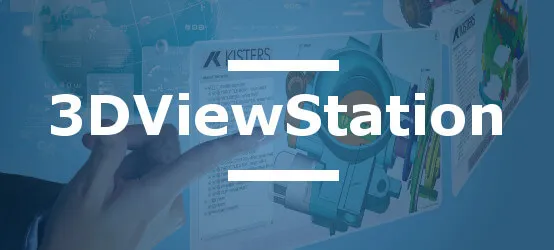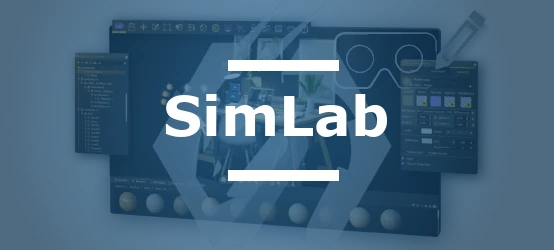VR & AR
In a major French aerospace company, a team of engineers had just completed the design of a new propulsion system. After six weeks and €180,000 invested in a physical prototype, they discovered during testing that a critical interface between two components made assembly impossible. A problem that could have been identified in minutes with the right CAD visualization in virtual reality technology.
This situation perfectly illustrates why immersive visualization of 3D models is transforming industrial processes today. Traditional methods face major obstacles: increasing product complexity with thousands of interacting components, geographically distributed teams, organizational silos between departments, and prohibitive costs of physical prototypes representing up to 25% of development budgets.
The conversion between native CAD formats (.CATIA, .NX, .CREO) or neutral formats (STEP, IGES) and immersive environments creates a crucial interoperability challenge. Preserving technical metadata and complex hierarchical structures becomes essential to maintain the value of models in virtual environments.
To address these CAD-VR interoperability challenges, we offer specialized solutions:
- SimLab: Integrated suite transforming CAD data into interactive experiences while preserving animations and textures
- 3DViewStation VR: Direct visualization of massive assemblies with native support for PMI metadata and intuitive gesture controls
- CADfix VIZ: Intelligent optimization of complex models with targeted decimation and structure preservation
These technologies fundamentally transform four critical areas:
- Immersive technical training, reducing operational errors by 47% and increasing knowledge retention by 75%
- Interactive technical documentation with 3D PDFs and sequential animations replacing static manuals
- Collaborative design reviews in immersive environments, accelerating decision-making regardless of location
- Multi-environment virtual prototyping allowing simultaneous testing under various usage conditions
The documented business benefits are substantial: 30% reduction in physical iterations, 65% decrease in physical prototypes, 45-60% savings on travel for technical reviews, and 15-40% acceleration in time-to-market. For every euro invested in virtual validation, companies save an average of 12 euros in late corrections and product recalls.
Our detailed articles will guide you in integrating these solutions into your existing technological ecosystem to radically transform your development processes. In a context where agility and rapid innovation determine competitiveness, CAD visualization in virtual reality becomes an essential strategic lever for forward-thinking industrial organizations.
"The engineer stared at his screen in frustration. Three weeks of work on an ultra-detailed SolidWorks model, and now the client wanted an immersive virtual tour by tomorrow. 'Impossible,' he thought... until a colleague slipped him a SimLab file. Twenty minutes later, his VR headset displayed the complete assembly, including textures and animations. The meeting was a resounding success."
This scenario plays out daily in modern manufacturing. The technical gap between CAD models (precise, cumbersome, mathematically accurate) and VR environments (smooth, optimized, real-time) sometimes seems insurmountable. Yet, the ability to efficiently convert your Solidworks, CATIA, Inventor, or Rhino files to high-performance VR formats now represents a decisive competitive advantage. In a world where tessellation, polygon optimization, and assembly hierarchy preservation are becoming strategic skills, understanding CAD-VR exchange formats is no longer optional.
SimLab stands out precisely for its ability to support more than 25 import formats and 15 export formats, intelligently preserving animations and textures while allowing precise optimization control. Its ultra-fast conversion, material preservation, and autonomous operation have made it the go-to tool for immersive design reviews and technical training.
But why do so many companies continue to waste weeks on manual conversions when this technology already exists?
Imagine being able to virtually test the behavior of a product in dozens of different environments before even creating a physical prototype. This revolutionary approach saves up to 70% of development costs while significantly accelerating time-to-market. In an industrial context where the slightest design error can cost millions, multi-environment virtual prototyping has become the solution for companies looking to maintain their competitiveness.
"Three minutes in a VR headset were enough to avoid six months of delays on the X340 project." This isn't a marketing slogan, but the testimony of an engineer at a leading automotive manufacturer.
Virtual reality is quietly redefining the rules of industrial development. While some still consider it a gimmick, forward-thinking companies have already embraced it as a decisive competitive advantage. The question is no longer if you'll adopt these technologies, but when your competitors will.
In total immersion, teams detect problems invisible on traditional screens, reducing costly errors by 25% at the end of the cycle. What are the risks of remaining in the flat world of traditional design reviews?
"The client frowned as he looked at the slideshow. 'I still don't understand how this system fits into our production line.' The sales engineer then took a VR headset out of his briefcase: 'What if you could walk through your factory and see the system in operation before you even bought it?' An hour later, the purchase order was signed."
This scene, experienced at a French automotive supplier, perfectly illustrates the transformation currently taking place in technical and sales communication. When words and static images are no longer enough to convince, virtual immersion becomes the secret weapon of the most successful sales and technical teams. In 2025, PDF documents and PowerPoint presentations increasingly resemble telegrams in the smartphone age—functional but terribly limited.
Virtual reality democratizes access to technical expertise. It transforms the invisible into tangible, the abstract into concrete. A technician can now practice handling critical equipment before physically touching it. A decision-maker can virtually explore an entire factory from their desk. These experiences can't be told—they must be lived.
But do you know what your competitors are already doing with this technology as you read this?
"Thomas' first day at UPS. Instead of an instruction manual, he's handed a VR headset. Fifteen minutes later, he's already virtually navigated three dangerous road situations and mastered essential safety protocols. Something six hours of theoretical training might never have captured in his memory."
This scene, commonplace in large corporations in 2025, illustrates why virtual reality is quietly revolutionizing professional training. Walmart is using it to prepare a million employees to handle the chaos of Black Friday. Surgeons are practicing complex operations without risking a patient's life. Even the French National Employment Agency (Pôle Emploi) is now immersing job seekers in virtual job interviews to perfect their techniques. It's no coincidence that studies show that VR training improves knowledge retention by 70% compared to traditional methods.
The power of this technology lies in its unique ability to create multi-sensory learning: learners no longer simply read or listen—they experience the experience in a safe environment where mistakes become a learning opportunity rather than a real risk. In a world where skills are evolving faster than ever, this immersive approach transforms weeks of training into days, days into hours.
But do you know what your direct competitors are already implementing in their training programs as you read this?
"The day Jean showed his future factory to his investors, the factory didn't exist yet. But with VR headsets on their heads, they were able to walk through the production lines, virtually activate the machines, and even simulate an emergency evacuation. The investment was validated the same day, six months before the foundation stone was laid."
This story is nothing unusual in 2025. Professionals without programming skills transform their static 3D models into immersive interactive experiences every day using tools like SimLab. While some continue to present their designs on flat screens, others invite their clients and colleagues to literally walk through their ideas, handle their products, and experience their simulations.
The technical barrier that once separated 3D content creators from VR developers has crumbled. Today, if you can import a CAD model, you can create a complete immersive interactive experience—with animations, interactions, visual effects, and even built-in quizzes.
But how can we explain that 78% of companies that already have 3D models still do not exploit this hidden potential lying dormant in their servers?



